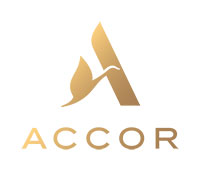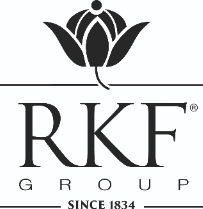Not As Great in 2008 for U.S. Hotels
|
Not As Great in 2008 for U.S. Hotels
|
Catégorie : Amérique du Nord et Antilles
Ceci est un communiqué de presse sélectionné par notre comité éditorial et mis en ligne gratuitement le 11-12-2007
PKF Hospitality Research (PKF-HR) is
reaffirming their forecast for a modest slowdown in U.S. lodging industry
performance in 2008. For the year, PKF-HR is projecting occupancy levels to
experience a slight decline (-0.7 percent), while average daily room rates
(ADR) should grow 5.3 percent. The net result is a 4.5 percent gain in
revenue per available room (RevPAR), the slowest pace of RevPAR growth
since recovering from the 2001 to 2003 industry recession. While the PKF-HR
forecast calls for a deceleration in the pace of revenue growth, it should
be noted that the 4.5 percent RevPAR growth rate is still above the Smith
Travel Research long-term average of 3.4 percent. These findings come from
the recently released fourth quarter edition of Hotel Horizons(SM), the
quarterly lodging forecast report produced by PKF-HR.
"Given the cyclical nature of the lodging industry, a slowdown in
performance does not come unexpectedly," said Mark Woodworth, president of
PKF Hospitality Research. "Hotel construction activity is picking up and
will cause a modest imbalance between supply and demand."
On the consumer side, PKF-HR does not foresee an imminent catastrophic
economic recession that would have a negative impact on lodging demand. "We
are concerned that the residential credit-crunch might have a negative
impact on leisure travel patterns in the summer of 2008. Fortunately,
corporate profits continue to support commercial lodging demand and should
mitigate any fall-off in leisure demand," Woodworth concluded.
Buying, Not Building
While the total pipeline of planned hotel projects is at an all-time
high, only a small number are actually breaking ground. The high costs of
construction and land, combined with firmer capital market discipline, have
helped to control the volume of new supply additions. In many instances,
the purchase and renovation of an existing hotel continues to be more
feasible than the construction of a new property.
"Given our analysis of current hotel construction activity, PKF-HR is
forecasting a 2.6 percent increase in lodging supply in 2008, or
approximately 115,000 new hotel rooms. This is the greatest annual supply
increase since 2000, but still less than the 150,000 new rooms added in
both 1998 and 1999," Woodworth noted.
Most of the new supply in 2008 will enter the Upscale and Midscale
without Food and Beverage segments of the industry. Properties in these
categories typically contain a limited amount of public space that makes
them relatively cost-effective to build. Conversely, PKF-HR is forecasting
an 11th consecutive year of declining inventory in the Midscale with Food
and Beverage chain-scale category. It should be noted during the third
quarter of 2007, the greatest percent increase in pipeline construction
activity occurred in the Luxury segment. However, given the time required
to build these elaborate facilities, the impact of the new competition will
not be felt until 2009 and beyond.
ADR Drives Revenue
Across the board, all segments of the lodging industry are forecast to
experience flat or declining occupancy levels in 2008. Luxury hotels are
forecast to achieve the greatest gains in ADR (6.6 percent), followed by
properties in the Midscale without Food and Beverage (6.0 percent) and
Upscale (5.5 percent) segments. Meanwhile, hotels in the Midscale with Food
and Beverage (3.8 percent) and Economy segments (2.9 percent) are expected
to lag in ADR growth.
"The ability to increase room rates will drive revenue growth for the
year," Woodworth said. "Luxury hotels enjoy a loyal base of guests that are
less affected by the recent dour economic news. The Midscale without Food
and Beverage and Upscale chain-scales include several select-service brands
that are very popular among both business and leisure travelers."
City Performance Varies
Geographically, all regions of the nation are forecast to experience
growth in RevPAR in 2008. "However, as we always caution our clients,
individual cities have their own cyclical behavior," Woodworth added.
Hotel managers in Austin and Salt Lake City are expected to enjoy ADR
growth rates in excess of 7.5 percent in 2008, due to a relatively limited
amount of new supply coming on-line. This strong growth in ADR should
result in nation leading RevPAR gains above 8.0 percent.
At the other end of the spectrum, hotels in the Long Island, Washington
DC, and Sacramento markets will struggle to grow their revenue in 2008
because of supply growth in excess of 5.0 percent. Hotel managers in Fort
Worth and San Antonio will face the greatest increases in new competition.
The lodging inventory in these markets is projected to grow in excess of
9.0 percent, thus resulting in a forecast decline in RevPAR for Fort Worth
(-2.2 percent) and a slight 1.4 percent gain for properties in San Antonio.
Buoyed by inbound international travelers taking advantage of favorable
currency exchange rates, New York should continue to enjoy particularly
high levels of occupancy, ADR, and RevPAR. Like the rest of the nation,
however, New York metro area hotels are forecast to experience a drop in
occupancy (-1.4 percent), with the overall occupancy rate remaining above
80.0 percent. The decline is attributable to record-breaking levels of new
hotel construction activity.
"The pipeline for new hotel projects in Manhattan is unprecedented, but
so are the high levels of occupancy and ADR," says John Fox, senior vice
president in the New York office of PKF Consulting. "Neighborhoods are
opening up in Manhattan where developers never thought of building before."
For 2008, New York metro area hotels are forecast to achieve an annual
occupancy of 82.7 percent, with an average daily room rate of $299.38.
Cost Concerns
PKF-HR is forecasting a healthy 8.5 percent increase in the bottom line
of the average U.S. hotel in 2008. Of concern for hoteliers is the rise in
the cost of operations. While total revenues are forecast to increase by
5.3 percent, hotel operating costs are projected to rise 4.0 percent,
nearly double the expected pace of inflation. Labor-related costs make up
45 percent of operating expenses at the typical hotel. Low national
unemployment rates put pressure on wage rates and make it difficult for
hotel managers to find staff. Further, PKF-HR has observed an increase in
expenses that management has less control over, including employee
benefits, utilities, property taxes, and insurance.
Decisions, Decisions
Approaching 2008, economists and government officials are starting to
show signs of pessimism regarding the health of the nation's economy. In
addition, industry veterans know lodging is a cyclical business and the
good times cannot continue without end. "Given the potential for a
turbulent economic and investment environment, combined with the first
signs of increased competition, U.S. hoteliers will have to think a little
harder in 2008 than they've had to the past four years," said Woodworth.
"Should owners sell or hold their properties? Is it time to build or buy?
Should management continue to push room rates, or retain occupancy? These
are the questions we'll be helping our clients answer during the year."
PKF-HR has long cited the ability of U.S. hotel managers to adapt to
changing operating environments. "We do not believe 2008 will be a
difficult year for hotel managers, but they will face more difficult
decisions regarding pricing, cost controls, and marketing. For the most
part, 2008 will still be a seller's market, but a softening economy will
make travelers more price sensitive than they have been the past three
years," Woodworth concluded.
For owners and investors, a forecast of stable market conditions
without any major swings up or down makes it difficult to decide what to do
strategically. Woodworth notes, "Traditionally, investment activity is
greatest when there is a perception that the market is approaching a peak,
or about to climb out of a trough. At these points in the cycles, hotel
real estate participants act on their respective investment strategies and
either buy, build, sell, or hold. Without a distinctive up or down
direction for the market, each owner and investor will have to decide
whether or not sustained, moderate growth in profits, representing a modest
dividend on their investment, meets their financial goals."
|
|





